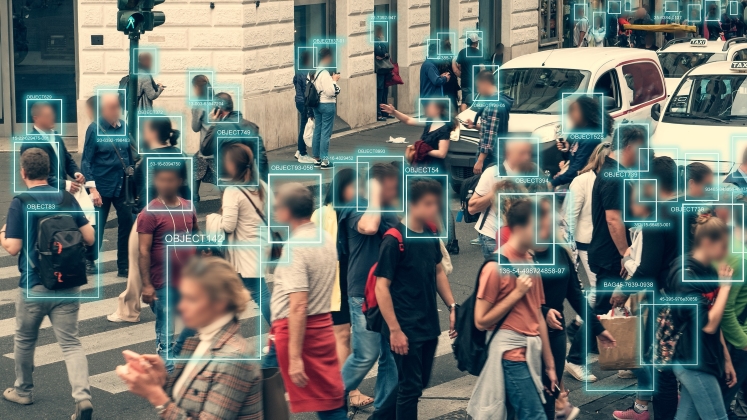
Conor Gearty‘s Homeland Insecurity explores the global rise of anti-terrorism legislation in the 20th and 21st centuries. Gearty probes the historical contexts and political forces – from colonial violence to Cold-War anxieties – that have shaped these laws and embedded them in liberal democracies, despite their infringement on civil liberties. The book’s accessible blend of law and history make it a valuable resource for researchers and policymakers, writes Prakash Rote.
Homeland Insecurity: The Rise and Rise of Global Anti-Terrorism Law. Conor Gearty. Polity. 2024.
 Can we understand terrorism today, and the state and international mechanisms created to counter it, through the insurgents of the past? Conor Gearty’s Homeland Insecurity starts with a little-remembered 1891 case involving Angelo Castioni who killed a Swiss State Council member and sought asylum in the UK. Swiss officials requested his extradition, but the judges denied it, stating his actions were “not sufficiently regrettable” to remove his protection from being extradited. The author notes how “hard [it is] to imagine a judge saying the same about a political killing today” (1).
Can we understand terrorism today, and the state and international mechanisms created to counter it, through the insurgents of the past? Conor Gearty’s Homeland Insecurity starts with a little-remembered 1891 case involving Angelo Castioni who killed a Swiss State Council member and sought asylum in the UK. Swiss officials requested his extradition, but the judges denied it, stating his actions were “not sufficiently regrettable” to remove his protection from being extradited. The author notes how “hard [it is] to imagine a judge saying the same about a political killing today” (1).
This emphasis on the radical shift in how such acts are viewed after 130 years sets the stage for a book that explores the global evolution of anti-terrorism legislation and its effects on individual freedoms and civil liberties. There is a substantial body of literature on the history and politics of counterterrorism, including discussions of related laws and their current state, for example Inside Terrorism by Bruce Hoffman (1998) the Routledge Handbook of Terrorism and Counterterrorism edited by Andrew Silke (2019); and Marc Sageman’s Turning to Political Violence: The Emergence of Terrorism (2017). Gearty, a practicing lawyer and a Human Rights Law professor at the London School of Economics, focuses on the historical development of counterterrorism laws rather than their current specifics. Examining the forces and contexts that brought sweeping counterterrorism laws into force around the world, he argues that they “are here to stay, whether or not terrorist atrocity remains a central source of anxiety” (3).
The legacy of Western colonialism involved violent tactics to suppress anti-colonial movements, as seen in the actions of the British in India and Africa, and the French in Vietnam
The first section of the book (15-121) examines the origins of anti-terrorism laws and explains their acceptance in liberal democracies, despite infringing on human rights. The author identifies two main reasons for this phenomenon. First, the legacy of Western colonialism involved violent tactics to suppress anti-colonial movements, as seen in the actions of the British in India and Africa, and the French in Vietnam. This history of asymmetric violence has contributed to the legitimisation of state violence today. After World War II, independence movements in former colonies led to the formation of democracies and the onset of the Cold War. In response to the spread of leftist and communist movements backed by Russia, Western nations stepped up their efforts to combat these ideologies while newly independent countries retained colonial-era anti-insurgency laws for stability.
In Latin America, leaders like Raúl Sendic in Uruguay and Carlos Marighella in Brazil promoted violence for political change, prompting stronger government crackdowns on communism. This leftist violence influenced political movements in Europe, resulting in groups such as the Red Army Faction in West Germany and the Red Brigades in Italy. The book examines how European countries addressed domestic violence during this time (35-84) and argues that responses to the communist threat during the Cold War are the second significant factor in shaping today’s anti-terrorism laws.
UN Security Council Resolution 1373 expanded the US ‘war on terror’ into a global initiative
The author examines how terrorism “went global” (85), identifying as a key factor the Israel-Palestine conflict of the mid-1970s, which arose from British colonialism and led to the 1947 UN partition plan. The 1972 Munich Olympics was a crucial event, where Palestinian militants took Israeli athletes’ hostage, marking a significant turning point in global terrorism. In response to this shift, many countries and international bodies enacted anti-terrorism laws, including the UN’s first resolution on terrorism, US president Richard Nixon’s establishment of the Cabinet Committee to Combat Terrorism in the US, and subsequent legislation in Sweden in 1973. This pattern continued in the proceeding decades, with the US Act to Combat International Terrorism (1984), as well as the Anti-Terrorism and Effective Death Penalty Act in 1996 after the World Trade Centre and Oklahoma City bombings.
The second part of the book discusses the global “spread” of anti-terrorism laws after the 9/11 attacks (125-211). The author highlights the UN’s role, particularly how Article 51 was used to justify the US invasion of Afghanistan and created a “legal black hole” (140) affecting individual liberties. Additionally, UN Security Council Resolution 1373 expanded the US “war on terror” into a global initiative, requiring member countries to prevent terrorism funding, halt arms supply to terrorist groups, prosecute suspects, and tighten asylum laws (155).
The author discusses why the “global war on terror” has faced little resistance from democratic states and has been easily justified, leading to minimal opposition. Gearty argues that the September 11 attacks marked a turning point that led to the widespread adoption of strict counter-terrorism laws, through international bodies like the UN, based on the belief that liberal democracy itself was at risk. He examines the impact of these laws on personal freedoms, including unlawful abductions, harsh interrogations, detention without trial, and surveillance. However, the book mainly focuses on the Western world and provides limited insights into the experiences of Global South nations post-independence and post-9/11.
Anti-terrorism laws address more than just terrorist threats – they suppress dissent in authoritarian regimes and expedite legal processes in democracies
In his examination of how anti-terrorism laws have developed over decades, Gearty highlights the challenges of pinning down a strict definition of terrorism and deciding what actions it applies to. One major difficulty lies in the fact that many nations (and UN member states) who gained independence from colonial powers, and their former colonisers, used violent methods in those struggles that could be seen as acts of terrorism (148). Gearty argues that the classification of an incident as terrorism depends more on the identity of the actor than the nature of the act itself. For example, during the Russia-Ukraine war, both sides labelled each other’s actions as terrorism. The Wagner Group, allied with Russia, is classified as a terrorist group. Additionally, climate activists argue that state-sponsored destruction of ecosystems is a form of terrorism, echoing Noam Chomsky’s views on US foreign policy. Gearty argues that “such a disputed expansion of the language shows the success of its embedment within our society” (202-203). Anti-terrorism laws address more than just terrorist threats – they suppress dissent in authoritarian regimes and expedite legal processes in democracies (210).
Homeland Insecurity develops its argument in a clear and accessible manner that eschews legalistic, merging history, international relations and law. It offers rich insights into how historical contexts shape legal frameworks and responses to terrorism. It examines the development of anti-terrorism laws and their importance for security, particularly for researchers in terrorism studies and Third World Approaches to International Law (TWAIL). It will serve as a valuable resource for policymakers and diplomats seeking to understand state actions related to security and terrorism. The book also offers references and recommendations, encouraging readers to explore in more depth how the counter-terrorism became so indelibly woven into the fabric of contemporary societies.
Note: This review gives the views of the author, not the position of the LSE Review of Books blog, or of the London School of Economics and Political Science.
Read a feature interview with Conor Gearty about the book in LSE Research for the World Magazine, “The rise and rise of global anti-terrorism law“.
Main image credit: DedMityay on Shutterstock.
Enjoyed this post? Subscribe to our newsletter for a round-up of the latest reviews sent straight to your inbox every other Tuesday.








